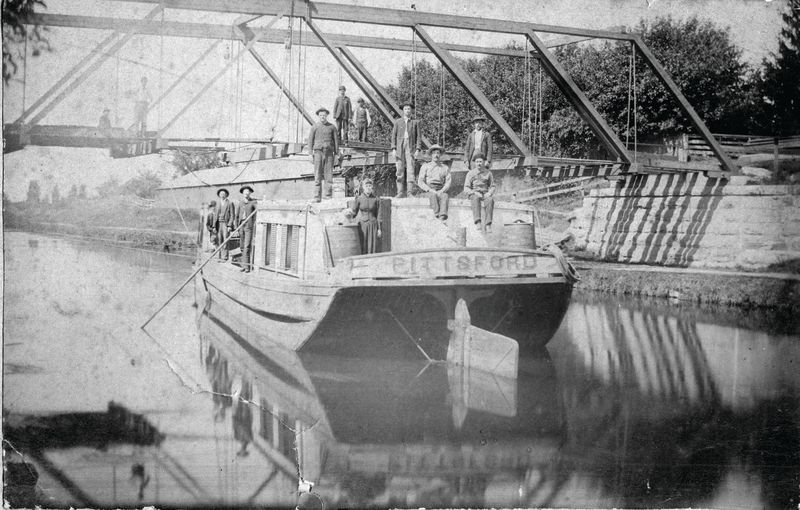
If you have lived in the (585) for any amount of time, you are familiar with the Erie Canal. What you may not know is that October 26, 2025, is the 200-year anniversary of the completion of this New York State waterway.
“Every town along the canal is connected through a shared history and culture,” says Derrick Pratt, director of education and public programming at the Erie Canal Museum in Syracuse. “The economic ties that historically bound them together are connecting them once again through the millions of people who travel the Erie Canalway Trail each year.”
Here is a historic snapshot of the small (populations of about 5,000 people or less) canal towns and villages from Orleans, Monroe, and Wayne Counties. Also, see where and why you should stop along this west-to-east, eighty-mile stretch today.
Village of Medina (est. 1832; pop. 5,096)
Sandstone was discovered during the canal’s construction, and John Ryan opened the first quarry in 1836, making the stone regionally famous. The canal allowed him to transport it across the state and use it to build the canal’s own expansion (1835–62).
Visit: St. John’s Episcopal Church (stjohnsmedina.org)
St. John’s is not only Medina’s oldest church (built 1832–38), but it was constructed out of Medina sandstone. View the stunning stained-glass windows, then grab a slice from Avanti Pizza: loveavanti.com.
Village of Albion (est. 1828; pop. 5,637)
In a smart move, Nehemiah Ingersoll bought the land around the planned intersection of the Erie Canal and main street in 1822. A grist mill was established in 1837 by Jesse Crowell’s Albion Company, facilitating the exportation of wheat and flour.
Visit: The Cobblestone Museum (cobblestonemuseum.org)
Made up of three Victorian cobblestone structures and four wooden buildings, the museum promotes the history of the county’s agricultural and skilled trades. Call to make sure it is open (May–October), then reserve a table for dinner at Tavern on the Ridge: dineatthetavern.com.
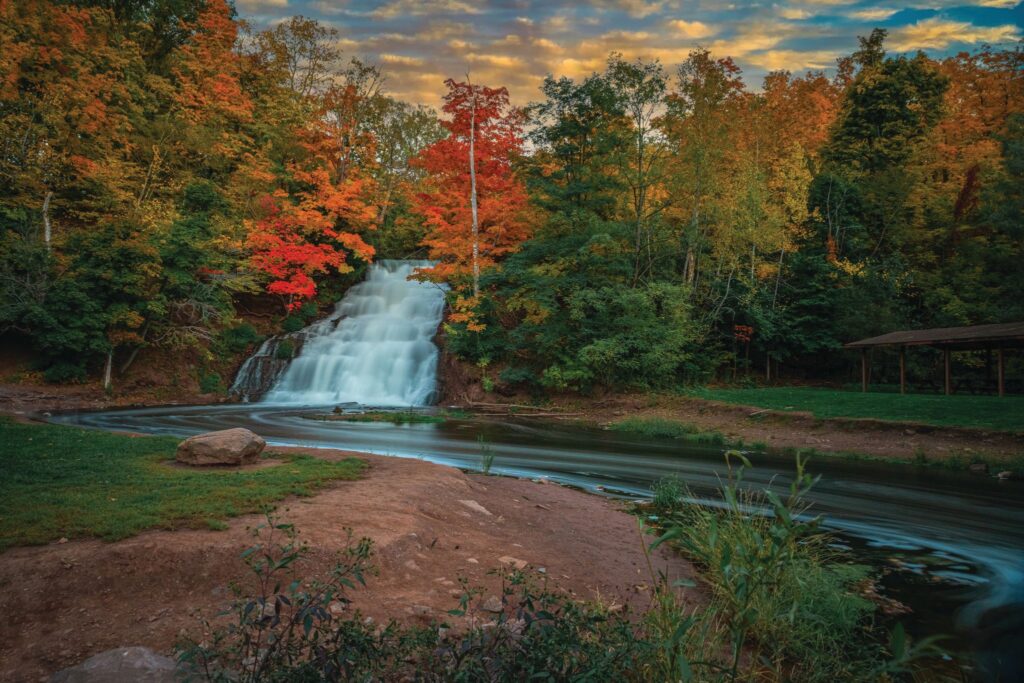

Village of Holley (est. 1850; pop. 1,730)
Named for Erie Canal Commissioner Myron Holley (who is buried in Rochester’s Mount Hope Cemetery), this village had a booming quarry business in the late 1800s. Several sandstone buildings still stand in the Village Square today.
Visit: Holley Canal Falls: (nyfalls.com/waterfalls/holley-falls)
Take a ten-minute walk—or a full hour hike around Canal Park—to see these manmade falls over Medina sandstone. The water is overflow from the canal, which empties into Sandy Creek and eventually Lake Ontario. After, have an ice cream at Red, White, and Moo (call for hours: 638-2090).
Village of Spencerport (est. 1867; pop. 3,655)
Daniel Spencer, who ran the village’s first tavern, also owned the land the canal was built through. Spencerport was named after him and became a major exporter of grain and beans. Visit: The Spencerport Depot & Canal Museum (spencerportmuseum.org)
The museum not only holds relics from the canal and Town of Ogden, but it is also a welcome center and boater’s facility for those traveling via canal (open April–October). Or attend Canal Days in July: spencerportcanaldays.com.
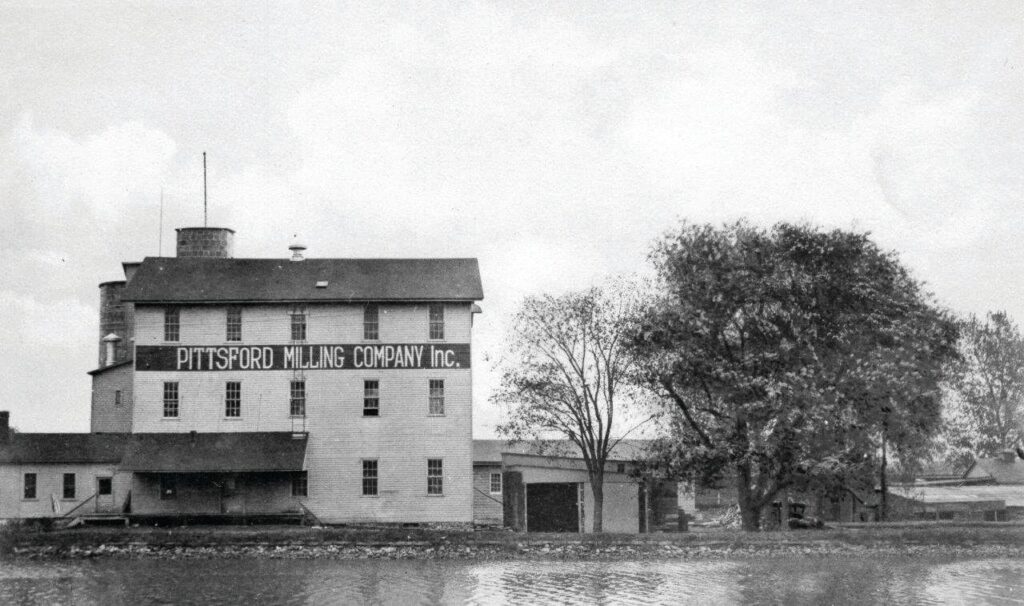
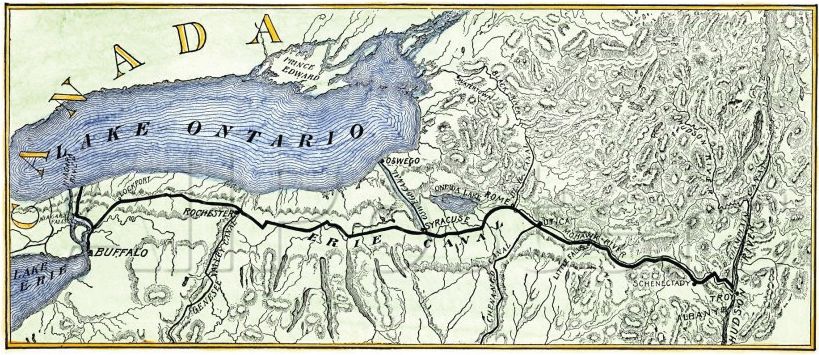
Village of Pittsford (est. 1827; pop. 1,332)
This farmland was named Northfield, Boyle, Smallwood, and finally Pittsford after Colonel Caleb Hopkins’s hometown in Vermont. Local exports transitioned from wheat to sand and limestone over time. Monroe County’s first doctor, John Ray, also arrived here in 1792.
Visit: Book Culture (bookculture.com)
This indie bookstore opened its fourth location on Pittsford’s Main Street in 2021. Then treat yourself to a stroll along the canal shops of Schoen Place (originally a lumber yard).
Village of Fairport (est. 1867; pop. 5,501)
Originally a swampland, the area of present-day Fairport became habitable after it was drained for canal construction. Rumor is that its name (formerly Perrinsville after settler Glover Perrin) came from a traveler who called the village “a pretty fair port.”
Visit: Perinton Historical Society and Fairport Museum (perintonhistoricalsociety.org)
The museum was built as the village’s library in 1938 and now hosts tours of homes, cemeteries, and landmarks. Want a canal view right now? Check out the canal cam: bit.ly/CanalCam.
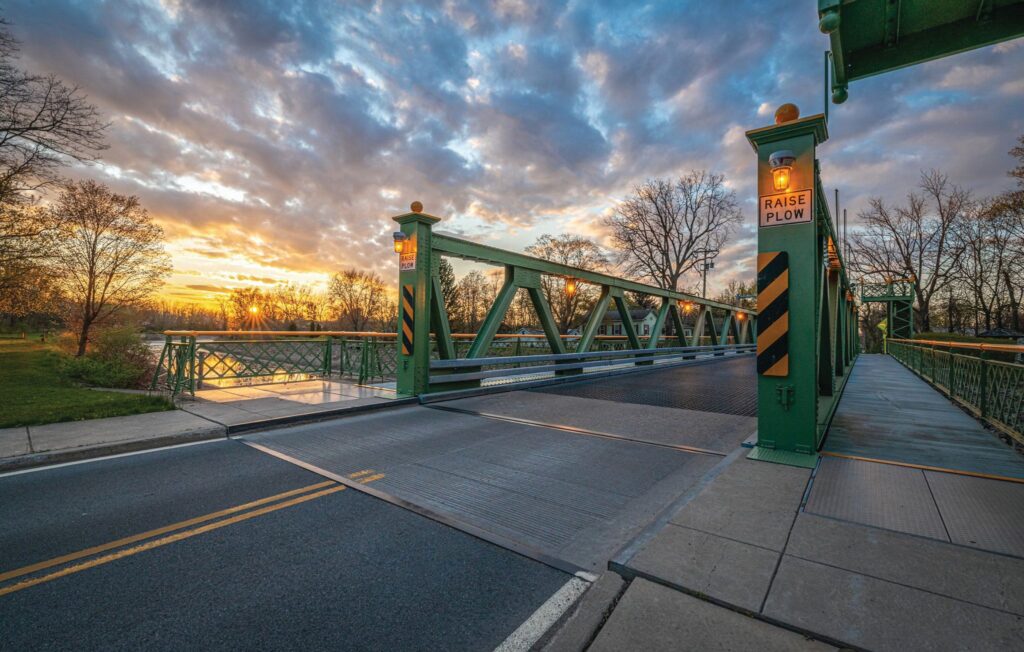
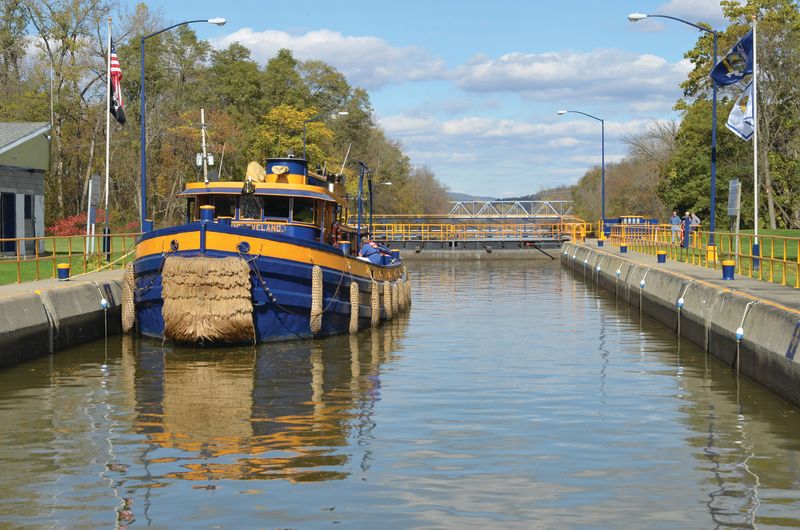
Village of Palmyra (est. 1827; pop 3,275)
The village sits within the town of its same name, known as the “Queen of Canal Towns.” Named Swift’s Landing after John Swift, it was an important stop on the Underground Railroad. It was also the birthplace of the Church of Jesus Christ of Latter Day Saints and where the first Book of Mormon was printed (1830).
Visit: The Five Museums (historicpalmyrany.com)
Get five sources of history in one stop! The Palmyra Historical Museum, Erie Canal Depot, Print Shop Museum, Phelps General Store & Residence, and Alling Coverlet Museum each offers unique experiences. Diner fare can round out your visit at the Akropolis Family Restaurant: akropolisrestaurantpalmyra.com.
Town of Lyons (est. 1811; pop 5,682)
Land agent Charles Williamson renamed “The Forks” to Lyons because the water junctions reminded him of Lyon, France. Also known as the “Peppermint Village,” this herb was Lyons’s cash crop in the mid-1800s, when peppermint oil was exported internationally.
Visit: The Peppermint Museum (lyonsheritagesociety.org)
Learn about Hiram and Leman Hotchkiss, who relocated their business from Phelps to Lyons, and about the process of making peppermint oil. There is also a minty gift shop. Call before you visit to let someone know you’re coming: (315) 946-4596.
Village of Clyde (est. 1811; pop. 2,138)
Located on the Clyde River, this site housed a trading post before its canal boom. In 1828, a window company merged with a bottle company, forming Clyde Glass Works.It manufactured some of the first Mason and Mason-style canning jars and was one of the largest glass companies worldwide.
Visit: The Erie Mansion Bed & Breakfast (eriemansion.com)
After Eugina Smith married Charles Ely (owner of Clyde Glass Works), they turned her parents’ 1850s home into the SmithEly Mansion, around 1910. After two generations and failed multiunit housing, Mark Wright bought the property in 2008 and turned into a B&B that also offers tours. You may or may not see a ghost. Then fuel up your car and belly at WestSide Fuel: westsideclyde.com.
This article originally appeared in the May/June 2025 issue of (585).
Views: 21




